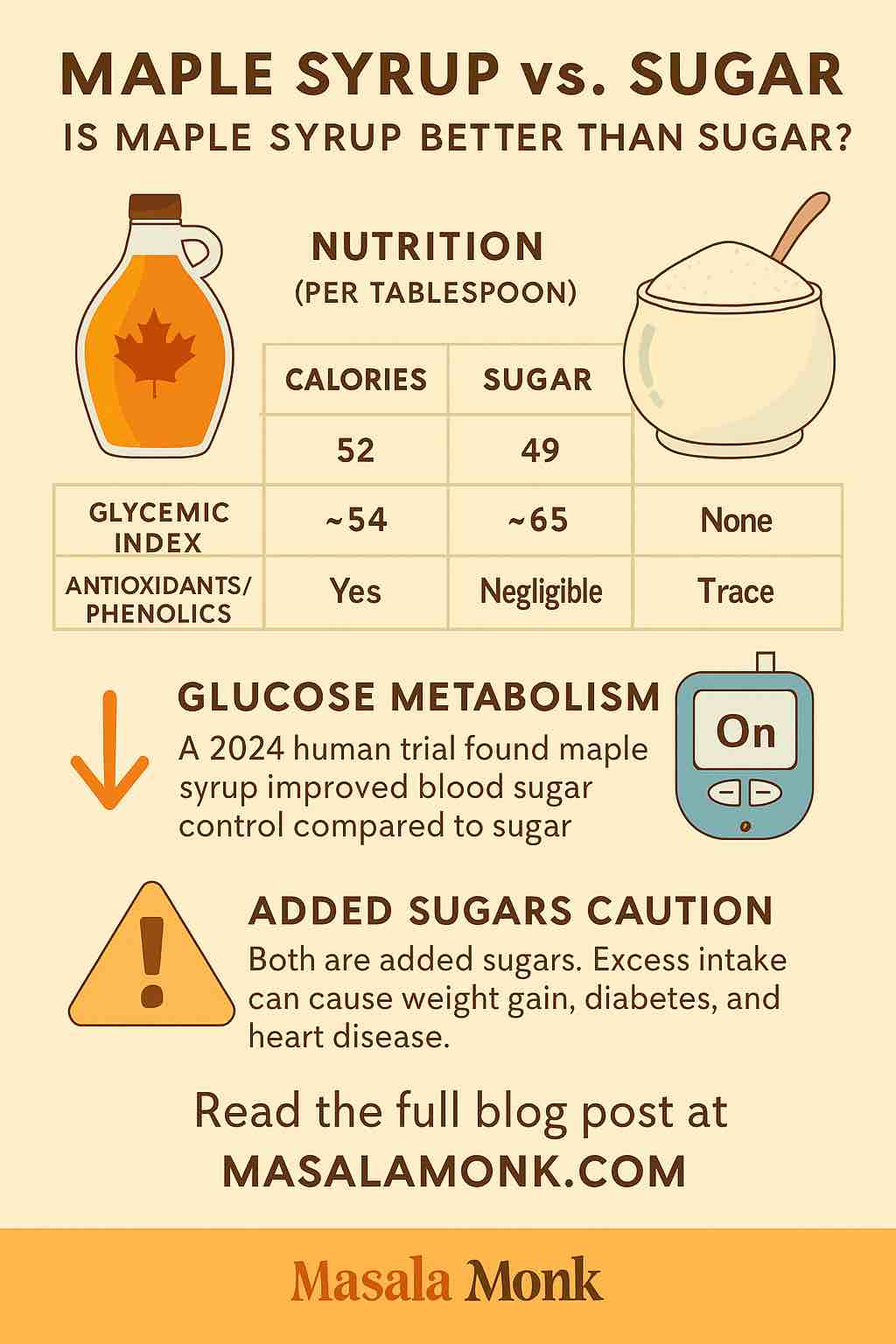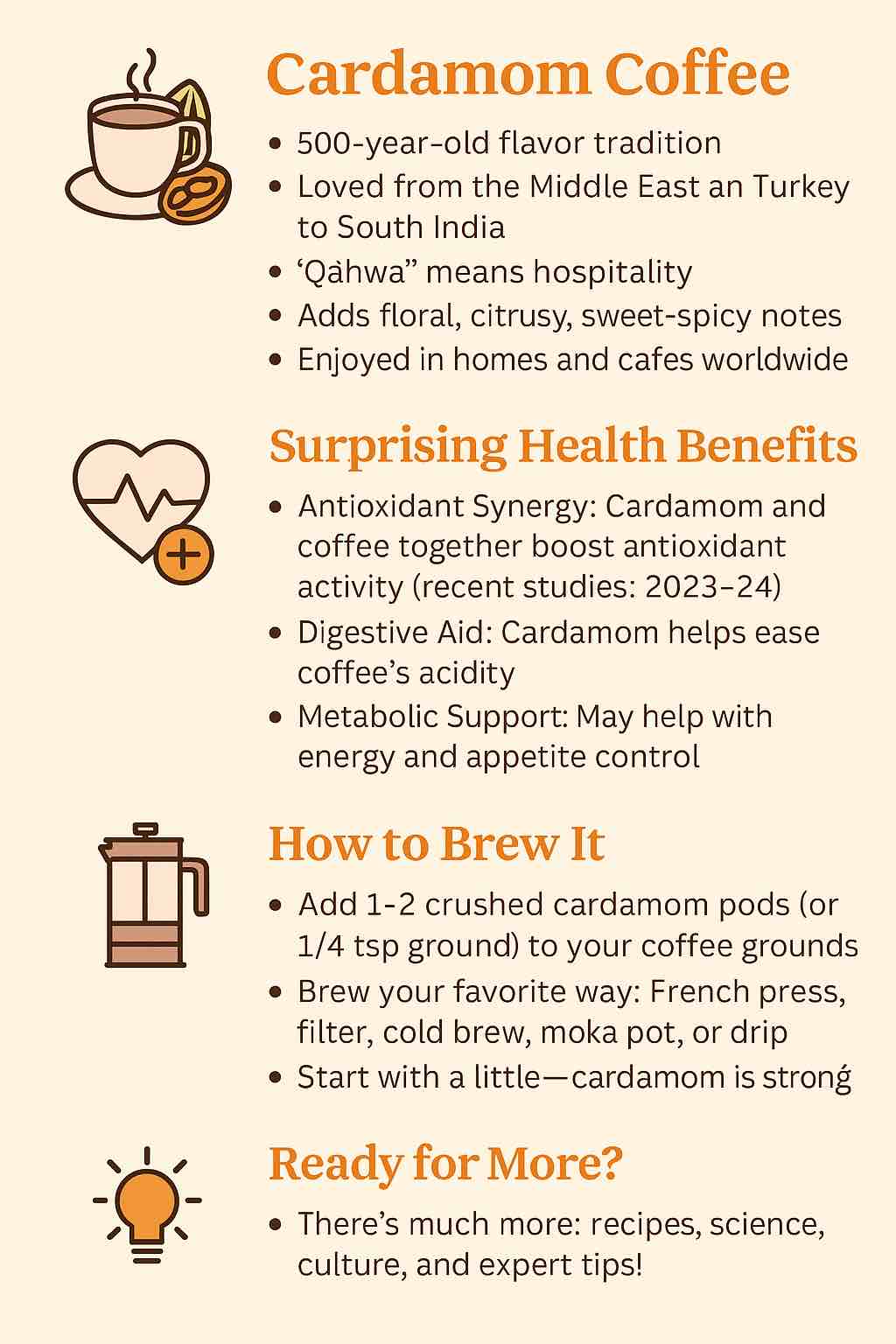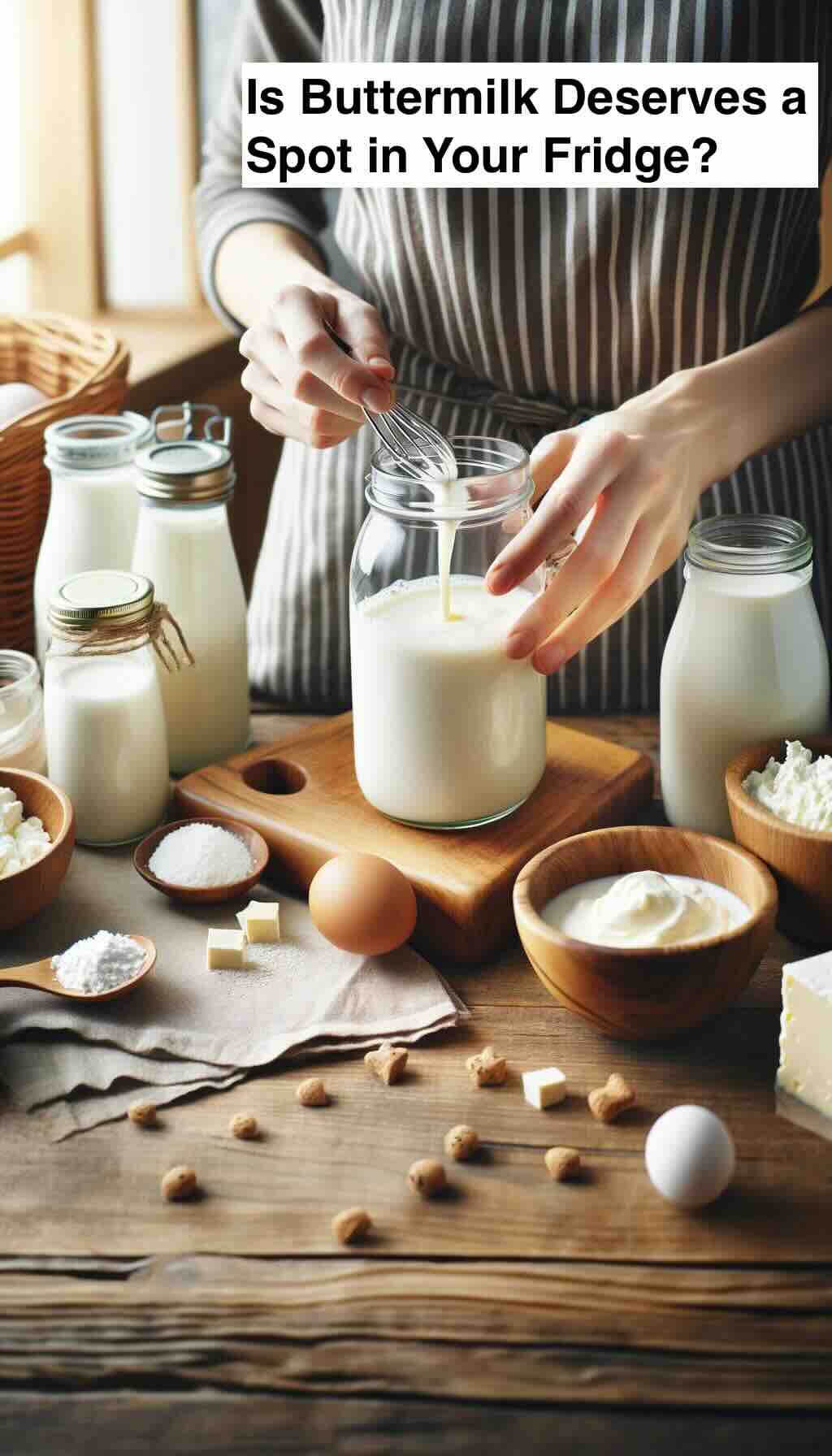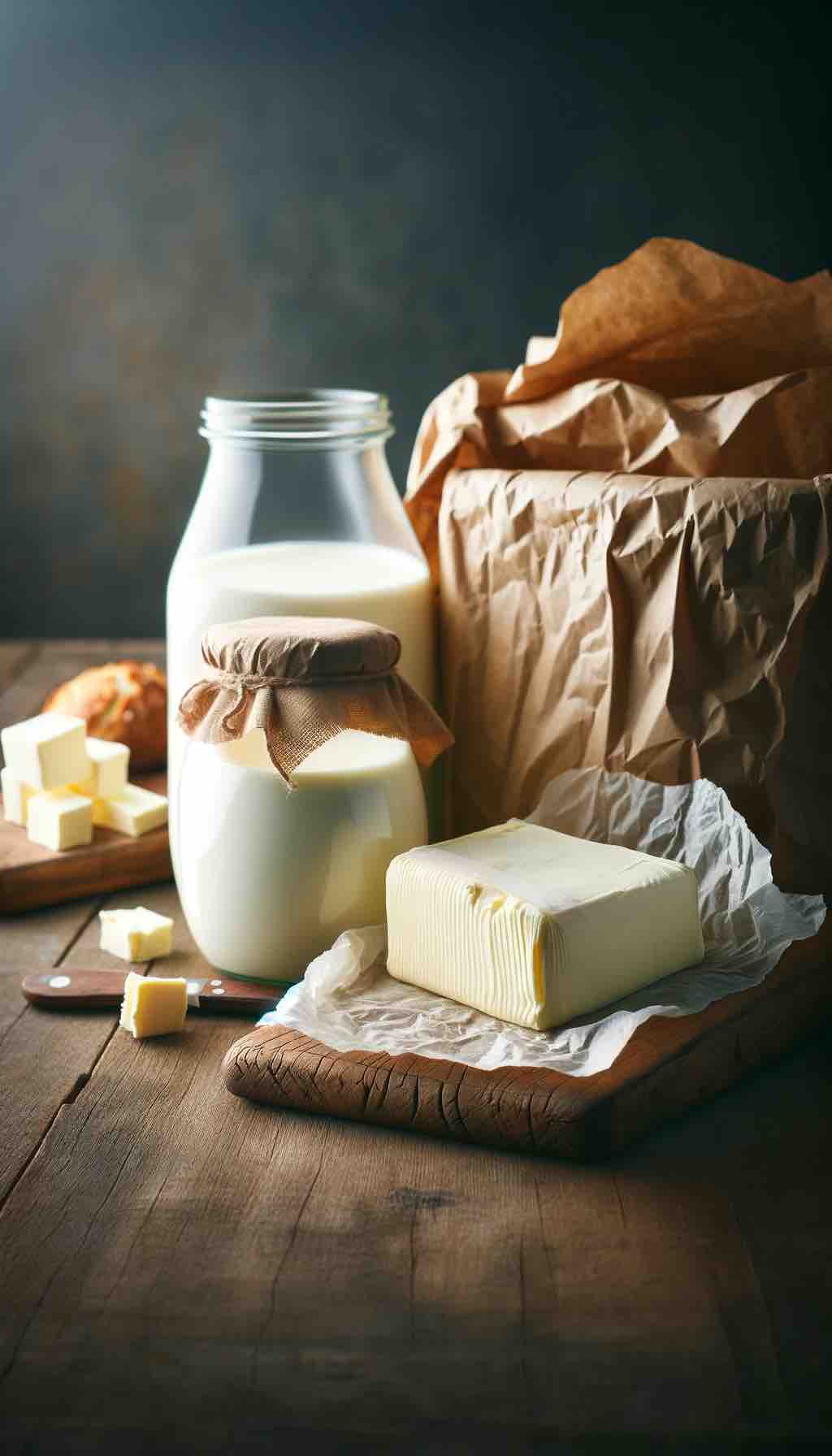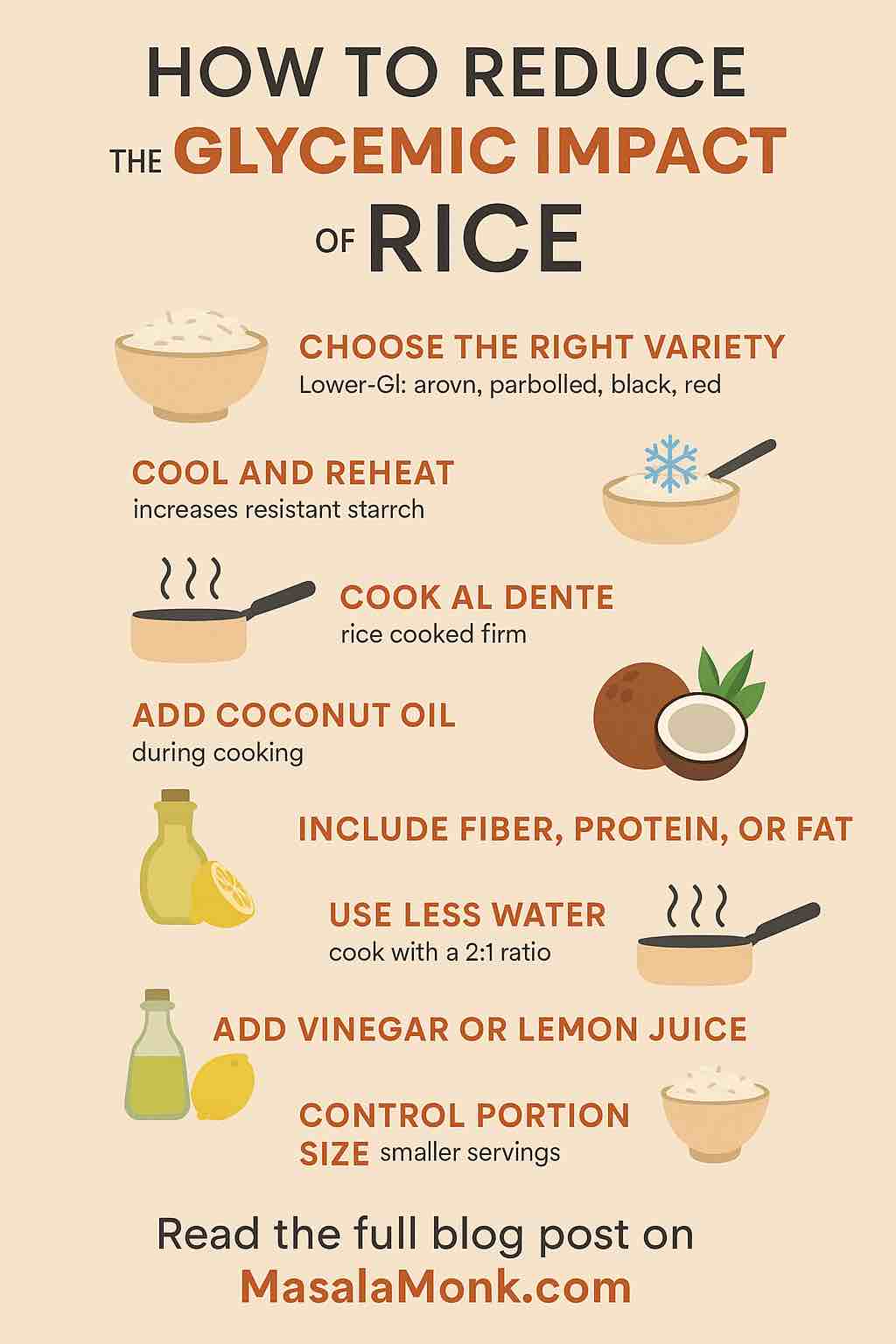
Rice. It’s comfort, it’s tradition, it’s at the heart of countless global cuisines. But for anyone keeping an eye on blood sugar, rice’s glycemic impact can feel like a guilty secret. The good news? There’s a lot you can do—without giving up your favorite dishes!
In this comprehensive post, we’ll break down how rice affects your blood sugar, why the glycemic index (GI) matters, and—most importantly—exactly what you can do in the kitchen to lower rice’s impact. Whether you’re managing diabetes, insulin resistance, or just want healthier carbs, these tips will transform the way you cook and eat rice.
What is the Glycemic Index (GI) and Why Should You Care?
The glycemic index ranks carbohydrate-containing foods based on how rapidly they raise blood glucose after eating. High-GI foods (like white rice, white bread, and many breakfast cereals) cause quick spikes in blood sugar; low-GI foods digest more slowly, leading to steadier energy and less strain on your body.
Rice’s GI can range widely—from the low 50s (brown, basmati) to the high 90s (sticky, jasmine, or overcooked white rice). The trick? You have more control over rice’s GI than you might think.
1. Pick the Right Rice Variety
Not all rice is created equal! Here’s a quick cheat sheet:
| Type | Typical GI Range |
|---|---|
| Basmati | 50–58 |
| Parboiled | 53–60 |
| Brown/Black/Red | 50–60 |
| Jasmine/Short-grain | 70–89 |
| Glutinous/Sticky | 80–98 |
Why the difference?
Lower-GI rices like basmati and brown have higher amylose content—a type of starch that resists digestion, slowing glucose release.
Pro tip:
If you can find it, look for parboiled rice (sometimes labeled “converted rice”) or even heirloom types like Pokkali or Kuruva—recent studies show these have some of the lowest GI scores!
2. The Game-Changer: Cook, Cool, and Reheat
If you take away just one tip, let it be this. The process of cooking, cooling, and reheating rice increases something called resistant starch (RS)—carbohydrates that resist digestion and act like fiber in your gut.
Here’s how it works:
- Cook rice as you normally would.
(Choose basmati, brown, or parboiled for best results.) - Cool it quickly.
Spread the rice out so it doesn’t steam itself soggy. Once at room temp, cover and refrigerate for 12–24 hours. - Reheat to serve.
Use a microwave, steamer, or stovetop. Reheating does NOT destroy resistant starch!
What’s the science?
Studies show this method can drop the glycemic response by 15–40%—with some varieties, even more. One study saw post-meal blood sugar drop from 152 to 125 mmol·min/L simply by chilling and reheating rice.
3. Cooking Tweaks: Less Water, Al Dente, and More
- Cook rice ‘al dente’ (slightly firm): Mushy rice = more digestible = higher GI. Slightly undercooked grains retain more resistant starch.
- Use less water: A 2:1 water-to-rice ratio is better than flooding your pot. This also helps create firmer, lower-GI rice.
4. Add a Spoonful of Science: Coconut Oil or Vinegar
Coconut Oil Method
- Add 1 teaspoon of coconut oil to the water before cooking your rice.
- Cool, refrigerate overnight, and then reheat.
- Sri Lankan researchers found this method increased resistant starch by up to 60%.
Acid It Up
- A splash of vinegar or squeeze of lemon juice on your rice, or a salad dressing with acid on the side, can lower the meal’s GI by 15–20%. The acid slows gastric emptying and modifies starch digestion.
5. Pair Smart: Fiber, Fat, and Protein Are Your Friends
Never eat rice alone! Combining rice with protein (chicken, beans, tofu), fiber (vegetables, legumes), or healthy fats (avocado, nuts, olive oil) slows the absorption of glucose.
Easy meal ideas:
- Brown rice with lentils and greens
- Sushi with avocado and fish
- Stir-fried rice with eggs and veggies
6. Mind Your Portions (Think Glycemic Load)
GI is just part of the picture. Glycemic load (GL) considers how much you actually eat. Even high-GI foods can have a modest impact if the portion is small. A half-cup serving of rice, especially when mixed with protein and fiber, is less likely to cause spikes than a heaping bowl.
7. Safe Storage is Key
Refrigerate cooked rice quickly. Don’t leave it at room temp for hours—it can harbor Bacillus cereus, a food-poisoning bug. Store in the fridge in small, shallow containers and reheat thoroughly.
8. Myth Busting: Does Freezing Cut Calories?
You might’ve seen viral claims that freezing rice “halves the carbs.” The reality: cooling increases resistant starch and may slightly lower calorie absorption, but the effect is modest. Still, every bit helps—plus you get a bonus boost for gut health!
Quick Reference: How to Lower Rice’s Glycemic Impact
| Tip | Effect | How To Do It |
|---|---|---|
| Choose lower-GI rice | 15–25% lower | Basmati, parboiled, brown, red, black rice |
| Cook-cool-reheat | 15–40% lower | Refrigerate 12–24h, then reheat |
| Add coconut oil while cooking | up to 60% more RS | 1 tsp per cup of rice, chill and reheat |
| Acid (vinegar/lemon) | ~15–20% lower GI | Add to rice or eat alongside |
| Pair with fiber/protein/fat | Significantly lower peak | Eat rice with beans, greens, eggs, avocado, etc. |
| Keep portions moderate | Lowers overall GL | 1/2 cup cooked rice per meal |
Kitchen Cheat Sheet: How I Lower the GI of My Rice
- Pick brown basmati rice.
- Rinse well and cook with 2:1 water and a pinch of salt.
- Add a teaspoon of coconut oil during cooking.
- Cool quickly and refrigerate overnight.
- Reheat for lunch the next day—top with lentils, sautéed spinach, and a dash of lemon juice.
- Enjoy delicious rice without the blood sugar rollercoaster!
Final Thoughts
Rice doesn’t have to be off-limits! By making these science-backed tweaks—choosing the right variety, using the cook-cool-reheat method, pairing wisely, and keeping portions sensible—you can enjoy all your favorite rice dishes while keeping your blood sugar steady.
Try these methods and share your results—what works best for you? If you have favorite recipes or hacks, leave them in the comments! Your rice just got a whole lot healthier.
10 FAQs: Reducing the Glycemic Impact of Rice
1. Q: Does brown rice always have a lower glycemic index than white rice?
A: Usually yes, but not always. While brown rice typically has more fiber and a lower GI than white rice, some white rice varieties (like parboiled or basmati) can have a GI similar to or even lower than some brown rices. Always check the variety.
2. Q: Is cooling and reheating rice safe?
A: Yes, if handled correctly. Cool rice quickly after cooking, store it in the refrigerator within 1 hour, and reheat thoroughly before eating. This prevents bacterial growth, especially Bacillus cereus.
3. Q: Can I use the cook-cool-reheat method with all types of rice?
A: Yes, but it works best with high-amylose varieties (like basmati and parboiled). Very sticky or glutinous rices may not see as much resistant starch increase.
4. Q: Does adding vinegar or lemon juice to rice change the taste?
A: A small amount of vinegar or lemon juice can brighten flavors without overpowering the dish. If you’re concerned, try adding it to a salad or side, rather than directly to the rice.
5. Q: Will these methods actually reduce the calories in rice?
A: The main benefit is lower glycemic impact. While increasing resistant starch can modestly reduce the amount of digestible calories, the effect on total calories is small.
6. Q: How much rice should I eat to keep my blood sugar steady?
A: Keep portions moderate—about 1/2 cup cooked rice per meal. Always combine with protein, fiber, and healthy fats for best results.
7. Q: Is rinsing rice before cooking necessary for lowering GI?
A: Rinsing removes some surface starch, which may slightly lower GI, but the effect is less significant than using lower-GI varieties or the cook-cool-reheat method.
8. Q: Can I freeze rice instead of refrigerating it to increase resistant starch?
A: Yes! Freezing rice after cooking and then reheating it also increases resistant starch—just be sure to cool it quickly and store safely.
9. Q: Will adding coconut oil to rice make it taste like coconut?
A: In small amounts, coconut oil is usually undetectable in flavor, especially if you’re using sauces or spices.
10. Q: Are there any risks for people with diabetes using these techniques?
A: Yes—lower glycemic response means your usual medication or insulin dose may need adjustment. Always monitor your blood sugar and consult your healthcare provider before making significant dietary changes.

